L. Reuteri Yogurt

A few months ago, I found this post on Wheatbelly about probiotic yogurt made using special strains of Lactobacillus reuteri. That link will sometimes lead to a paywall; here’s another post that recapitulates most of the same info in case Wheatbelly is locked. Technically, it’s not precisely yogurt, because the strains that make it aren’t registered yogurt strains – but it tastes like yogurt and handles like yogurt, so that’s what I call it. I started making it, and switched from half and half to heavy cream to get more good fat and less carbohydrate since I follow a keto diet. I’m not sure how much of the Koolaid I’m willing to swallow in terms of some of the dramatic claims – but I can definitely agree that this stuff seems to help my digestion and make me feel better. This “yogurt” is about halfway between sour cream and cream cheese in both texture and flavor, and it tastes good in both savory and sweet dishes. I regularly take it sweet with Splenda and some Lily’s chocolate chips and crushed pecans, or savory with herbs and salt on vegetables or a steak, or thinned down with ranch seasoning for dressing. I made a batch and shared it with several of my friends recently, and some of them asked for a tutorial – so here it is!
Ingredients:
Cream. I like to use Horizon or other organic types because I know they’re raised without hormones or antibiotics, but any cream will do. I’m usually making it by the quart, so two pints per batch. If you use a kind with stabilizers such as guar gum, xanthan gum, or carageenan, it will make the yogurt a little more stiff, but still perfectly fine.
Inulin. This is a fine, mildly sweet white powder made from processing starches. It’s used as a PREbiotic (not a probiotic) which means that it helps feed your intestinal flora, your “good bugs.” In this case, especially because I’m using cream which has very little milk sugar, it helps feed the Lactobacillus bacteria that make the yogurt. I can’t find any chart showing the difference between the inulin made from different sources (there are a LOT), but they do have slightly different flavors and significantly different textures. You do want to get one that’s a powder, not a bottle full of capsules. I use two tablespoons per quart. My friend Allison came over, and we did some experimentation – the Jerusalem artichoke inulin mixed up OK, but the agave inulin was easier to stir to a smooth slurry. The chicory inulin was tough to stir to a smooth slurry, and I had to strain it. I won’t get the chicory again.
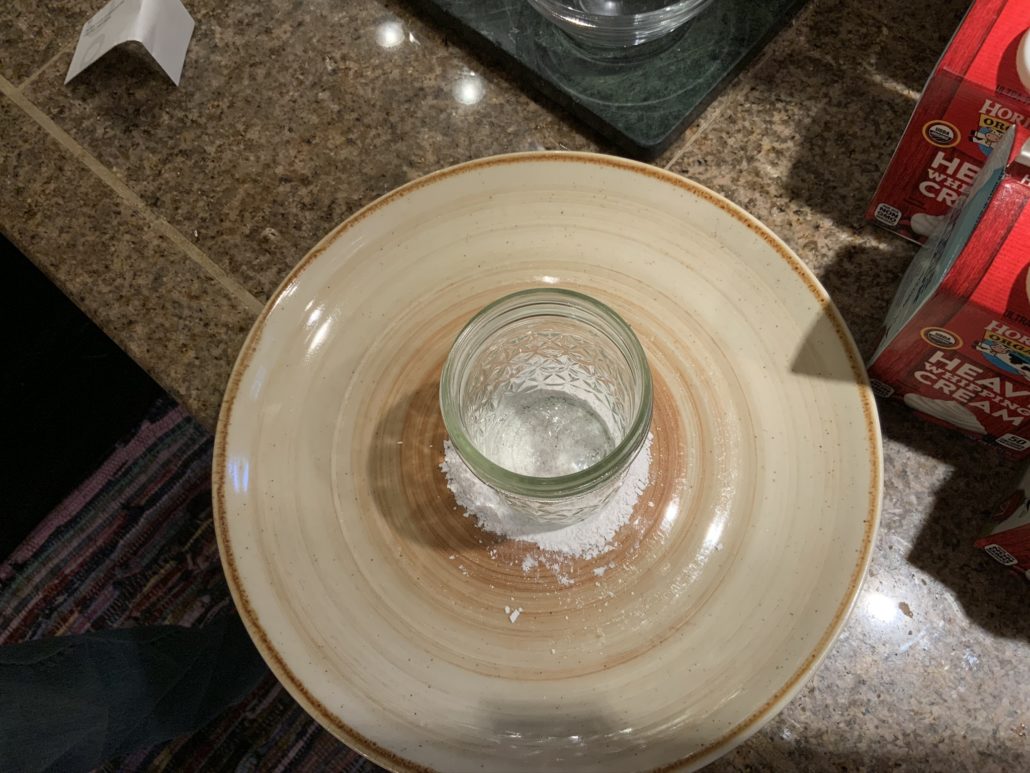
And, most importantly: the bacteria. This supplement, BioGaia’s GASTRUS, is the one that was listed in the Wheatbelly post, and it’s made from two strains that have been used in a lot of laboratory tests. The tablets are designed to be chewable, and they’ve got a slight mint/citrus flavor which doesn’t come through at all in the yogurt, but you might want to be aware of if you’re allergic to mint or citrus. Other probiotics will work, with varying degrees of success, I’m sure – I haven’t tried a bunch, and I don’t have a huge amount of yogurt experience. Unfortunately, this means I also can’t answer “but what if I substitute this different thing for that thing” questions.
I do this “cold start,” which means I don’t heat the cream to pasteurize it before inoculating it with the bacteria. I also don’t heat sterilize my equipment. I’ve read some sources that give all kinds of dire warnings about contaminated batches which go sour or fail to set. It hasn’t happened to me. If you want to heat sterilize your jars and tools and pasteurize your cream, by all means go ahead. I’ve done plenty of sterilizing with canning and jelly making, I’m just not that bothered about the likelihood of pre-pasteurized cream going bad.
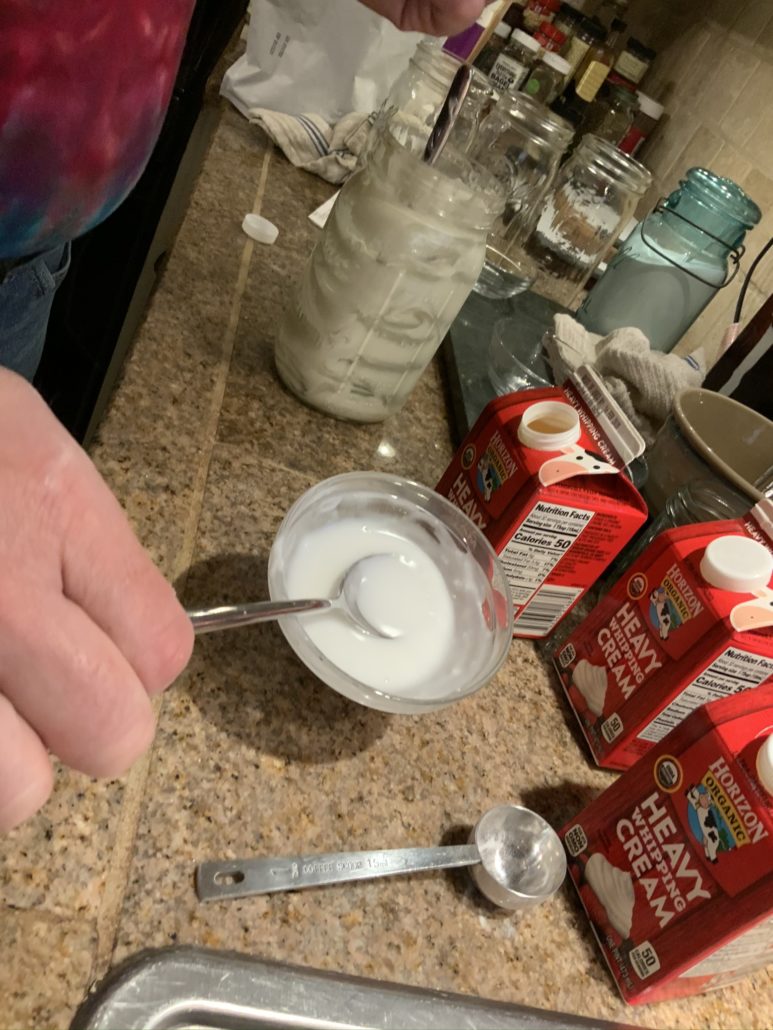
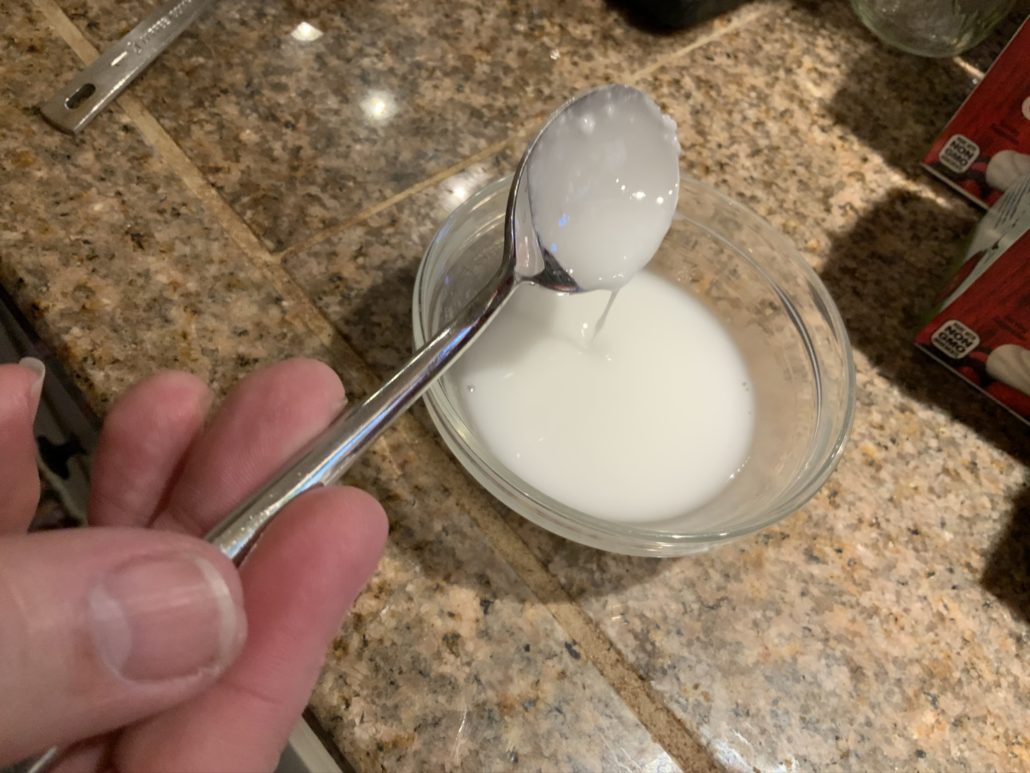
Start: make the slurry. If you try to just stir the inulin into the cream, it clumps up into little nodules, and they are very, very hard to stir out. I like to pour a tablespoon of water into a small dish, and sprinkle the two tablespoons of inulin on top of it, let it sink, and then stir. If you don’t let the inulin sink, its hard to stir. If you get lumps, you can press them through a tea strainer with the back of a spoon to break them up.
Add the probiotics. There are two ways to do this; if you’re starting from scratch, use ten of the BioGaia Gastrus tablets, crushed to a powder. I crush them on a dinner plate using the bottom of a small jar, but any kind of mortar-and-pestle arrangement will work. If you’ve made one batch already, then you can use two tablespoons of the last batch of yogurt instead. Whichever of the two you use, stir the mixture until smooth.

Put the slurry-plus-probiotics into the jars you’ll make the yogurt in. I like wide-mouth quart jars for my own use; I use wide-mouth pints or even little jelly jars if I’m making it to share.


Add the cream. Because this won’t be steam sterilized, you don’t need to worry about head space; it will set without increasing in volume or making any kind of froth. I use a long spoon to stir the mixture. Be careful not to hit the side of the jar hard with the spoon, or it can break a hole, and make a mess. Ask me about how much trouble it is to clean up a quart of cream that spills down the front of the cabinets! Put the lids on the jars.
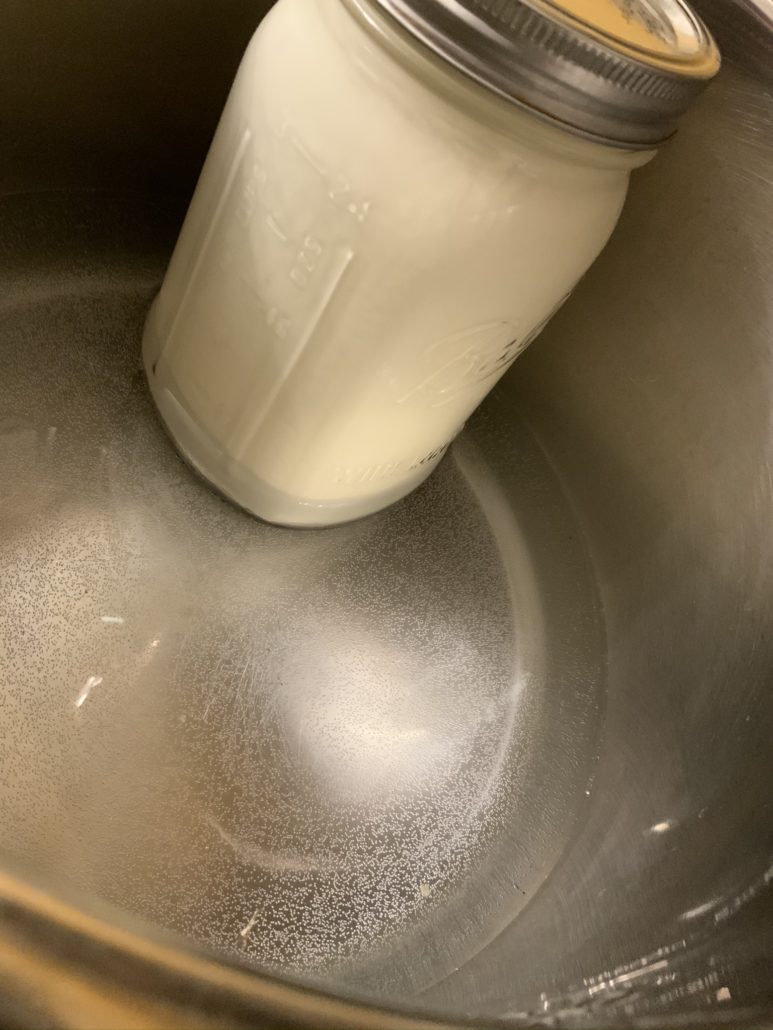
Put the jars in the Instant Pot, add a few inches of warm water, and set it for YOGURT. My IP has options on the YOGURT button for “more” and “less” – I set it for “less.” I have read some sources that say the IP gets too hot, but again – my results have been just right, with that setting. If you have a yogurt maker, you can use that, or you can do the trick with the oven that the Wheatbelly blog recommends. I set mine for 36 hours on the timer (press the little + sign until the time goes up). It will be yogurt-y after about 6 or 8 hours, but it grows more of the good bacteria as it goes longer, and gets a tangier flavor that I like. Refrigerate it to let it set before you use it.
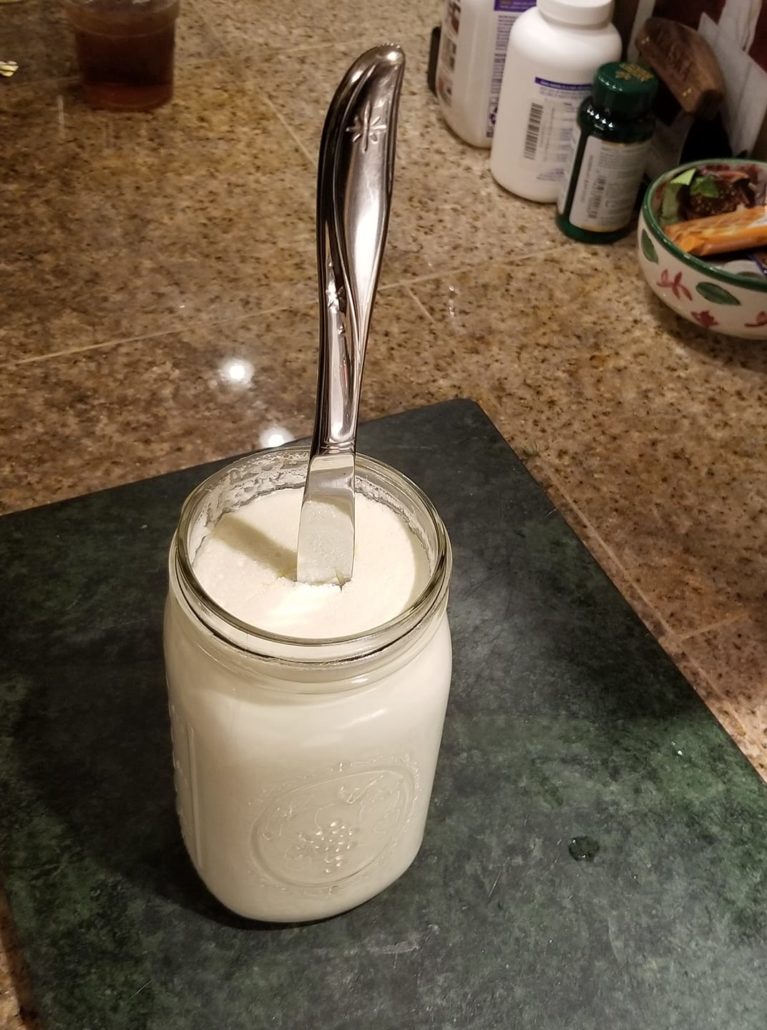
That’s it! Once it’s yogurt, you scoop it out, add whatever you like (or nothing at all) and eat it. If you’re going to mix it with something, it helps to stir it by itself some first in the bowl, and then add whatever you’re doctoring it with. I like to add C8 MCT oil to mine to get more ketones, and a tablespoon or more will easily stir into a half cup of yogurt with no major impact on flavor or texture. This stuff isn’t light – it’s about five hundred calories per cup – but it fits perfectly in a ketogenic diet, with almost all of the already minimal lactose in the cream being eaten up by the bacteria+. If you’re not doing keto, and you’re eating it for breakfast, just be aware that it’s dense!
This also makes an AWESOME cultured butter – just put the cream in a stand mixer with the usual paddle blade and let it do its thing on LOW. If you try to do it too fast, there’s a lot of splashing. Once it starts to clump, turn it all the way down, and let it run until it’s one big clump. Pour off the buttermilk (which is VERY sour, and awesome for use in recipes or to drink with some sweetening) and then wash the butter in cold water, pressing through it with a spatula until the water is clear and there’s no more buttermilk in it. Salt it if you like your butter salted.
